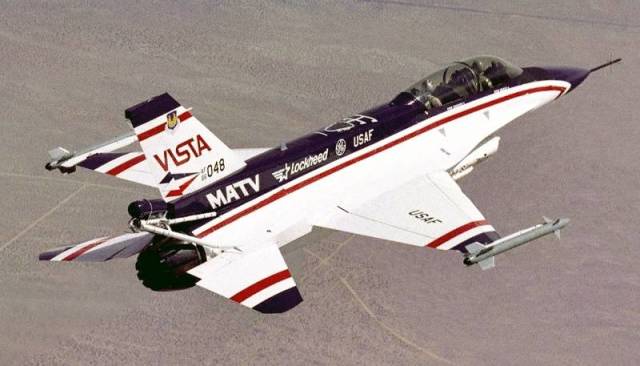
Image source: topwar.ru
Having not fully figured out the intermittent technical problems with the F-35 fighters and its modernization options, the Pentagon continues to report on successful tests of the "weapons of the future". The American military-analytical publication Breaking Defense reports that in December last year, the US Air Force for the first time conducted successful flight tests of a modified F-16 fighter using the VISTA artificial intelligence system.
Test flights were carried out over the Mojave Desert in southern California. The pilot lifted the fighter into the air, after which he transferred control to the AI system, which for some time autonomously controlled the aircraft. Two hours later, another test flight of the F-16 was made, piloted by an artificial intelligence system of alternative design.
Developers of software algorithms for autonomous piloting of combat aircraft note that these tests will help improve the AI system. At the same time, any software can be installed on the modified F-16, regardless of which company developed it.
The command of the US Air Force reported that thanks to successful test flights, the implementation of a program to create new unmanned aircraft capable of flying offline for a long time and coordinating their actions with other aircraft can be launched as early as next fiscal year.
Chris Cotting, Director of Research at the Air Force Test Pilot School, told the correspondent that to change the flight task of the experimental F-16 aircraft in offline mode, it is enough for him to install new software settings and reboot the system. During two test flights, the fighters completed various tasks. The first flight simulated situations of autonomous air combat with a conditional enemy, including those located beyond the limits of visibility. During the second test, the AI solved the main aviation and navigation tasks.
Despite two successful test flights, the US Air Force service, responsible for the implementation of artificial intelligence systems for controlling combat aircraft, is still mainly working out software on special X-62 ground simulators. During a simulated flight, a specially trained pilot is constantly monitoring the work of the AI, ready to intervene in the "control" of the aircraft at any time.
In a typical test flight, the pilot takes the X-62 to the desired altitude and speed, then loads the simulation system for any flight controls of the aircraft that will be used during the exercise and runs the simulation.
When planes and drones controlled by artificial intelligence will be able to take off completely autonomously, perform a flight mission in combat conditions and land, representatives of the US Air Force do not report.
